Speakeasy trend grows in Des Moines
5/31/2023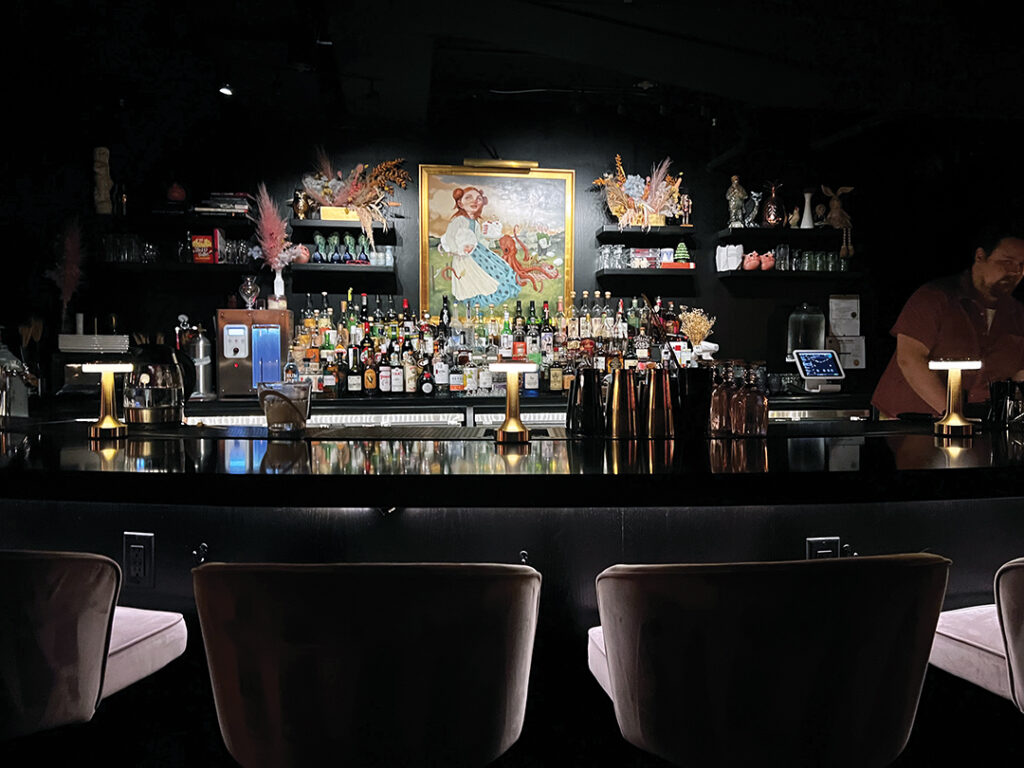
The decor of Good News, Darling reflects its name, with vintage newspaper wall coverings.
After Congress ratified the 18th Amendment in 1919, the manufacturing, sale and transportation of alcoholic beverages were banned nationwide. However, Iowa started its own prohibition in 1916. But prohibition efforts within the state began even before that. The Iowa Liquor Prohibition Amendment was approved in 1882 but was found unconstitutional by the Iowa Supreme Court in 1883. Despite the efforts to ban alcohol, there was no shortage of drinking during prohibition.
“The sale of alcohol did not stop,” said Leo Landis, curator for the State Historical Museum of Iowa. “There’s even a report of bootleggers selling to Roosevelt kids.”
Prohibition era speakeasies
Alcohol was not in short supply, and there was no shortage of venues to have a drink during prohibition. Speakeasies, at the time, were known as places where alcoholic beverages were illegally sold. Popular culture might paint a picture of secret doors, stairs, entryways and knock combinations, but in Des Moines and other parts of Iowa, speakeasies were often found in small establishments in a back room or separate areas for consuming alcohol. They often operated out of already-established businesses that had to disguise themselves as something else.
“While speakeasies were common in larger cities such as New York or Chicago, it was likely that such clubs were rare and short-lived in Iowa,” said Landis. “Gatherings of people even in larger towns the size of Des Moines, Sioux City and Cedar Rapids would have eventually attracted the attention of law enforcement.”
Law enforcement was well aware of speakeasy culture. Des Moines’ police chief at the time, John Hammond, led a hardcore prohibitionist police force. In the 1920s, nearly 300 liquor nuisance charges were filed per year, almost one a day in Des Moines.
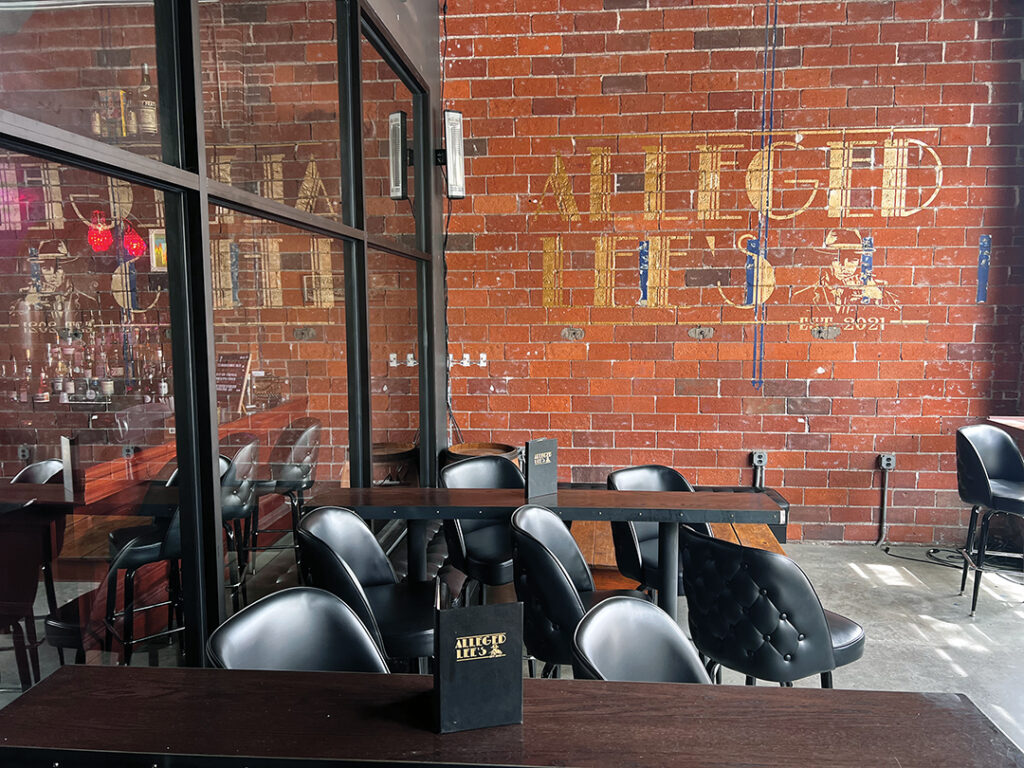
Alleged Lee’s may have a speakeasy feel inside, but its front door and patio give a different impression.
Oftentimes, Des Moines speakeasies sourced their supply from local producers. A notable example is a producer who kept 800 gallons of mash, which would become 325 gallons of liquor.
One of the most famous Des Moines-based bootleggers was Kenneth Sonderleiter. He was responsible for trafficking alcohol to all kinds of individuals and establishments. He became known as Des Moines’ “society bootlegger.” Sonderleiter eventually faced federal liquor charges in 1931 and was stripped of his citizenship. However, these rights were restored by a presidential pardon provided by President Roosevelt in 1942.
During the height of his bootlegging, Sonderleiter might have been responsible for the marketing and advertising of Des Moines’ speakeasies. During prohibition, pirate-themed literature was floating around the city discreetly promoting some speakeasies. When police raided Sonderleiter’s home, his basement was pirate-themed.
From a business perspective, Landis said the revenue generated from operating a speakeasy ranged from “reasonable extra income” to a “somewhat lucrative source of revenue.”
In December 1933, the 18th Amendment was repealed with the 21st Amendment. A national inability to enforce prohibition led to the repeal.
Soon, Iowa started to see the presence of state liquor stores, and customers could begin purchasing beer at venues. Liquor by the drink was still illegal, and wine and spirits could only be purchased at state liquor stores. During the gubernatorial election of 1962, alcohol regulation became a political issue again in Iowa. Democrat Harold Hughes, who was an alcoholic, promised Iowans they would be able to buy more than just beer at a bar. Hughes won the election, and, in 1963, Iowans were able to purchase liquor by the drink like today.
Modern day speakeasies
Recently, a nationwide trend to recreate prohibition-era speakeasies with modern-day service and drink selections has emerged. While some of these venues use prohibition as their inspiration, their accuracy is said to be lackluster.
“It’s hard to get it right because there’s always those nuances. It’s hard to get it exact,” said Landis.
Tim Wilcoxson, general manager of the Iowa Taproom, agrees.
“That would be really hard to do,” he said.
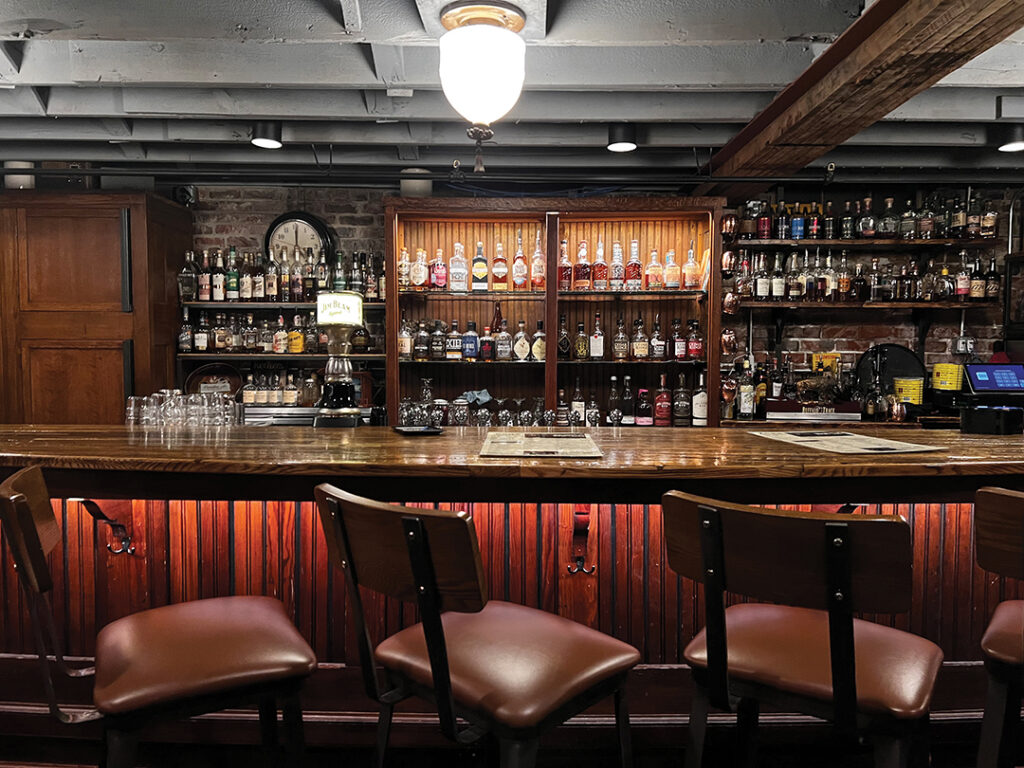
In the basement of Iowa Taproom, one will find Ken’s – A Not So Secret Speakeasy
Ken’s – A Not So Secret Speakeasy
Located in the basement of the Iowa Taproom is Ken’s – A Not So Secret Speakeasy. Some of the owners of Ken’s are history buffs and decided to name the venue after Des Moines’ Kenneth Sonderleiter. Don Short from West End Architectural Salvage had an eye for the style the venue was trying to achieve, and he helped build the space three years ago.
The tables are built from old trailer truck beds. The lower bar is made from an auditorium stage from Haverhill High School. The booth dividers are old elevator doors from the Equitable Building. The mirror is from an old mansion that used to be on Grand Avenue.
What helped the style of the venue was a fire that once burned down the building where the Iowa Taproom is now located. This was during the Korean conflict, so an iron embargo meant both upstairs and downstairs would be finished with wood.
The look is not the only thing retro.
“We like to do a little bit of everything,” said Wilcoxson about the venue’s drink selection. “We have a lot of classic drinks on the menu.”
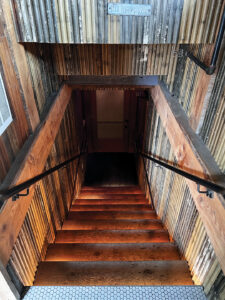 To follow prohibition-era drink making, Ken’s does it quickly with a minimal amount of ingredients.
To follow prohibition-era drink making, Ken’s does it quickly with a minimal amount of ingredients.
The Honey Nut Bourbon-O uses Barenjager, which Wilcoxson considers an often forgotten-about liqueur. In conjunction with a local radio station to celebrate their birthday, they created a simple three-ingredient cocktail called ‘Sup Des Moines, using Revelton Mulberry gin. Also on the menu is Dilley’s Printing Press Punch, named after the building’s former tenant, and the Presidential Pardon Martini, celebrating Roosevelt’s favorite cocktail.
Ken’s does everything the Iowa Taproom needs it to do. The space mainly serves as the waiting room for upstairs, Thursday through Saturday. The space only serves drinks, appetizers and desserts. The rest of the week, the venue can be rented out for private parties and events.
One of the biggest differences between today’s speakeasies versus speakeasies during prohibition is the sense of secrecy and exclusivity. For Ken’s, it is right in the name— A Not So Secret Speakeasy.
“We wanted people to be able to find it,” said Steevo Andrews, who does marketing and public events for Full Court Press, the company that owns the Taproom. “We had a lot of secret staircase ideas, and we had a lot of secret cocktail drinks and things like that. We ended up deciding to try to make the place busy.”
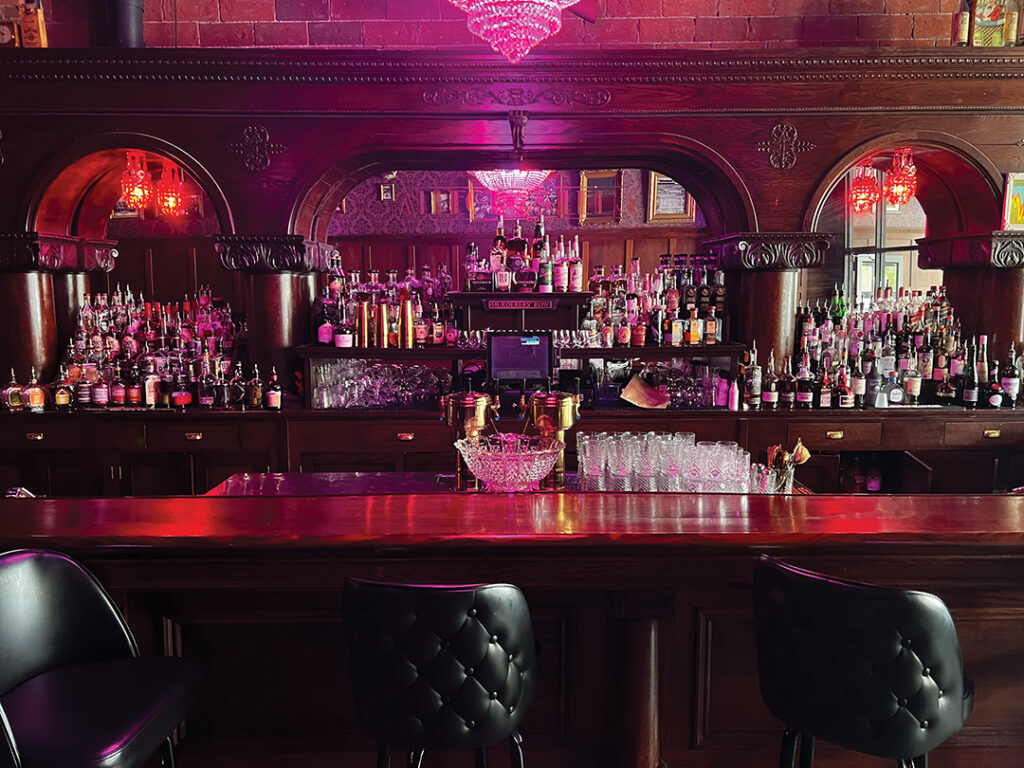
Alleged Lee’s features a Brunswick Triple Arch bar originally built in 1890. Above the bar is an original Tommy gun.
Alleged Lee’s
A venue with an even harder time maintaining any kind of secrecy is Alleged Lee’s in Des Moines’ East Village because the city made them install a front door. This gave them the opportunity to put in a patio and have some storefront advertising.
In addition to Alleged Lee’s, Brian Rorris also owns Quinton’s Bar and Deli. The company was at the end of its lease and was looking to move Quinton’s because of COVID. However, Rorris was able to work with his landlord and divide the space between Quinton’s and Alleged Lee’s. At the time, Rorris believed the East Village lacked a true speakeasy.
Rorris said everything in the space is authentic. The back bar is a Brunswick Triple Arch originally built in 1890. Rorris said they looked all over the country, flying to Philadelphia, Denver and down to Texas. Eventually, they found one in Atlanta and brought it to Des Moines. The process took nine months. Sitting above the bar is an original Tommy gun. The space is wrapped in a custom wallpaper with a damask pattern. All the frames are antiques, and each picture has some relation to the prohibition era or Des Moines.
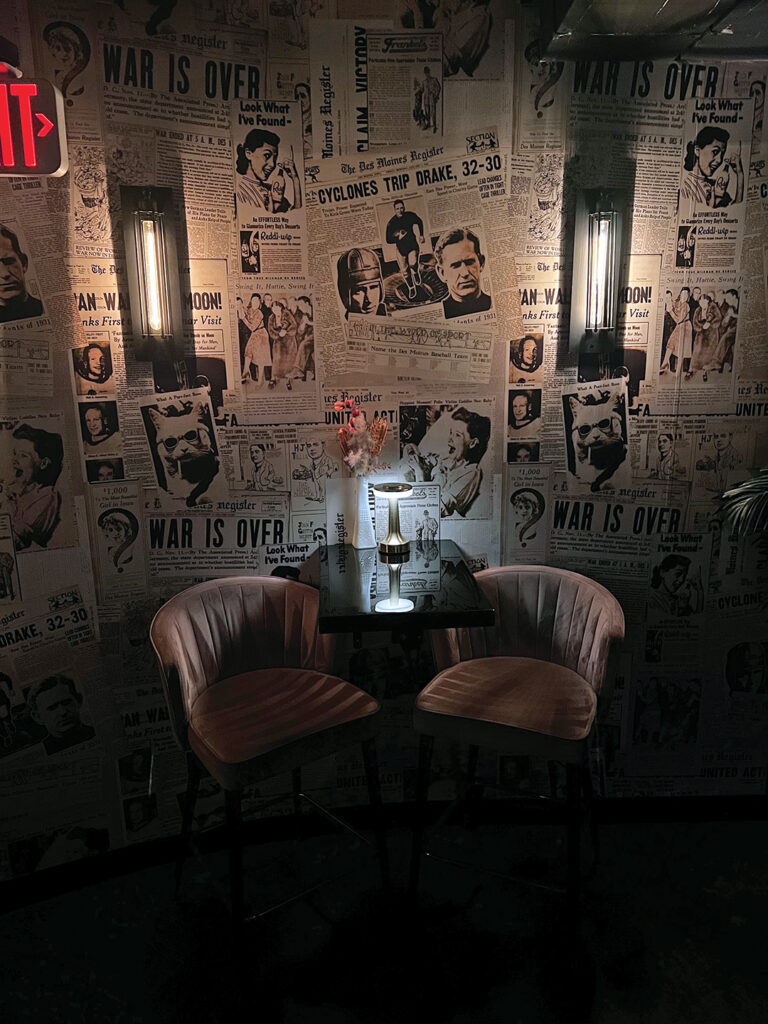
Alleged Lee’s features a Brunswick Triple Arch bar originally built in 1890. Above the bar is an original Tommy gun.
Good News, Darling
When the owner of Des Moines bar Hello, Marjorie, Nick Tillinghast, signed the lease for a big commercial space, he only needed a portion of the 5,000 square feet they offered him. He and his team operated Hello, Marjorie, for two years before Tillinghast inquired about a backroom that was being used as a construction office. Tillinghast was hoping to provide a more intimate getaway from Marjorie for a smaller number of people to relax and have deeper conversations. During the pandemic, Tillinghast had the idea to create a dark room with only 26 seats. Soon, the team was able to build out during the pandemic and opened Good News, Darling in April 2021.
Tillinghast does not consider Good News, Darling to be a speakeasy because he markets and uses social media to promote the space. But a better term to describe it would be a hidden cocktail bar. Good News, Darling has its own entrance without any signage, and the host will escort you to the back.
“We do elevated food-style culinary cocktails and have the opportunity to give very focused hospitality,” said Tillinghast. “Food is kind of the inspiration behind what we do back there.”
The bar seating at Good News, Darling is first-come, first serve. However, Tillinghast wanted groups to have the opportunity to plan their nights, so the rest of the space is made by reservation online.
Not exactly
Landis, the curator for the State Historical Museum of Iowa, says, “I’m not sure that they’re accurate to what a speakeasy would’ve been like in the 1920s.” Even so, he appreciates the new trend of speakeasies and calls it “a good marketing idea.” ♦


















